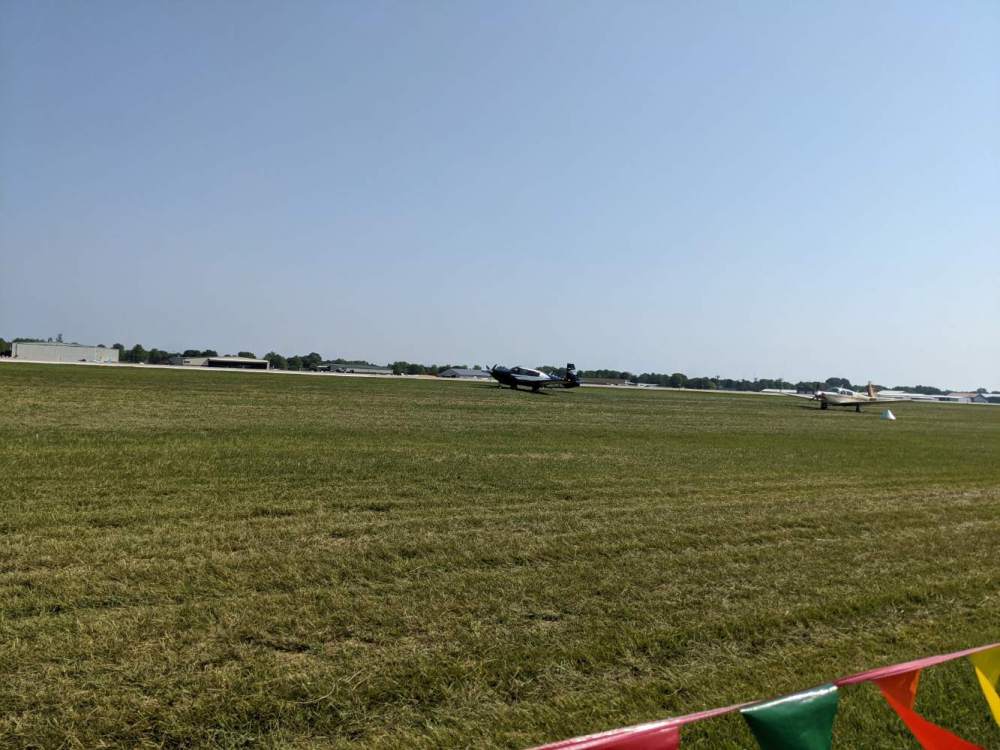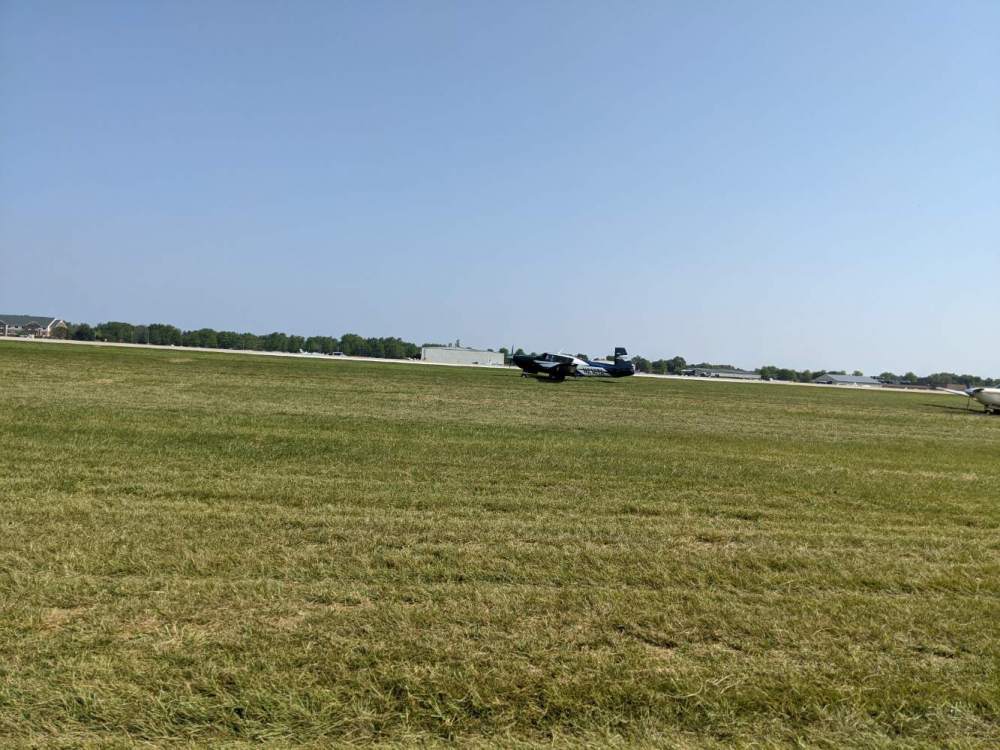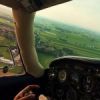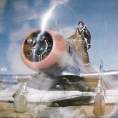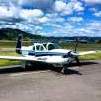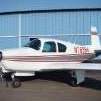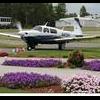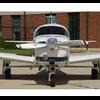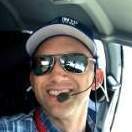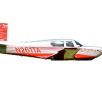Leaderboard
Popular Content
Showing content with the highest reputation on 07/25/2021 in all areas
-
10 points
-
For those unfamiliar, Dan Gryder is a blowhard who often uses the guise of promoting aviation safety to self-aggrandize and advance personal vendettas in his rambling YouTube posts. I doubt his accident knocked any decency or humility into him - it is just another opportunity for self promotion. Don't feed this troll.3 points
-
It will be interesting to see if the post-crash analysis is as ruthless as his recent ones were . . . .3 points
-
Whoa…he had T&B, alt, VSI, ASI and a whiskey compass? That should be enough for just about anyone to keep it right side up.3 points
-
The Mooney Summit has reached out to the oldest surviving son to offer assistance3 points
-
I live on the edge of the presidential TFR. I was outside working at about 10am and I heard a very loud jet. I look up and see an F16 in a tight right hand turn. A few seconds later a C172 comes into view. The F16 circles the 172 two more times and looks as though he is forced toward KRDG. At 8pm I was putting my kids to bed and hear another F16 outside. I go out and see another Cessna getting circled and forced towards KRDG. Please pay attention out there.2 points
-
I know Dan personally. He runs hot and cold and quite frankly has done some things both personally and professionally which have not served him well. He has also done some really great things. I don't like the path he is on right now with "Probable Cause" and if I were to run into him again, I would tell him just that. The NTSB normally does not take cases like this, but his recent criticisms of them have been pretty biting. I'm guessing they are going to yank him around quite a bit. In this business, the line boy can be your chief pilot tomorrow. Low tones often work better.2 points
-
2 points
-
I finally had my Swiss watches removed this year - and believe me I was one who really loved and was amazed by the mechanical Swiss watches. However, its just a fact: as amazing as they are, they are just not as reliable. But I also have a Swiss watch, an actual mechanical autowinder watch by Zenith, and heck, I guess my Swiss watch will have to be my Swiss watch for now on. I had a pair of GI275 installed, and I do like the form factor of a panel of round gauges, so when they hit on that concept, I was the perfect customer - still has a bit of a classic look but much more modern inards. Heck I even went svt. And I kept my mechanical backup electric gyro by lifesaver. Because only a fool thinks anything is fool proof.2 points
-
I’ve had one Vac failure (oddly while getting checked out in the Mooney) and one AI failure. The AI was a window into how things can go bad. I was in between layers in heavy rain when I hit heavy rain and moderate turbulence. It was expected and no big deal but the heavy rain and layer below made for what was ostensibly IMC. When things smoothed out, it was clear that the vertical axis of the AI was showing a climb in level attitude so I reached up to adjust it. The knob was a bit stiff and as I twisted it a crack propagated across the glass from the knobs location. The instrument rolled off to the left shortly thereafter. I ripped the back page from the magazine my wife was reading and covered the AI. Had it failed earlier in the heavy rain and turbulence, I would have been much less comfortable. All that being said, this guy is an ATP with professional recurrency training and more than 5000hrs. I’m not beating up on him, but if it’s that “easy“ to lose control of an aircraft with a known instrument failure (in my mind one of the safest things about glass is that a tells you when you shouldn’t use it), Then many of us or just one instrument failure away from dying. I’ve never done partial panel an actual. The event referenced above is the closest I’ve ever come. I’m not beating up on this guy but i’d love to talk to him. Recovering in a partial panel situation is a lot harder than not letting it get away from you in the first place. He didn’t recover, he was very lucky to find VMC and had have adequate altitude and presence of mind to recover. He obviously did some things right. He never gave up. He also managed to regain control of the aircraft without destroying it in the process… No small feat given some of the Flight data.2 points
-
Zef has a good troubleshooting guide on their website. It’s specific to the vr model. I’d try that first. An hour with a digital voltage meter and the troubleshooting guide should narrow down the problem quickly.2 points
-
All pilots, experienced and otherwise, are subject to the effects of oxygen deprivation - even the experienced test pilot who wrote the article who advised against it.2 points
-
Give me a break. You got your answer in the first response. If people offering you alternatives and quite possibly better alternatives bothers you that much, don’t ask a question on a forum. Other people’s opinions are appreciated by most on here.2 points
-
14:30-15:45 - Ruminations of a Midair Survivor by Larry "Joker" Brennan at EAA Forum Stage 11 - Deltahawk Engines Monday July 262 points
-
2 points
-
An A&P can sign for a transponder as it is minor, you will need an IA to sign the 337 for the GDL-82. Neither item is required to be installed by a Garmin dealer. The install manual for the GDL-82 requires a power check of the transponder to be performed. You will most likely need a radio shop for that, it can be done with the 91.413 inspection.2 points
-
There are 3 different versions of a IM for the M20J with a King 200 system. Late in the production (24-1419 and later) it looks like they changed the function of the trim interrupt switch assembly. The earlier version of the switch assembly functioned as a means to interrupt the trim power, which would remove power to the drive transistors stopping a runaway auto-trim condition as long as the switch was activated. The early version used a disconnect relay that would cause the computer to disconnect if using the MET switch as you can't have auto-trim and MET trim at the same time so the computer has to disconnect. The pic below shows the interconnect function of the trim interrupt switch and the disconnect relay function. In this version the computer would disconnect when the AP/disconnect relay is energized from the yoke mounted trim arm side of the split rocker switch. When the left side of the split rocker moves up or down it will send bus voltage to the disconnect relay causing it to energize and remove the engage voltage to the control head. At the same time it routes power to the other side of the MET switch allowing you to go up or down with MET trim. The later revision used a different switch assembly that would remove power to the trim servo and the computer engage voltage at the same time. The disconnect relay was removed due to the switch change. The part that bothers me is when if you look at the parallel from the TB after the trim interrupt switch that goes back to the computer on P2951 pin k. I think if this voltage is removed it should disconnect the system as well, it is mention in the IM that if the trim breaker is pulled the computer should disconnect. Opening the trim interrupt switch should have the same function as pulling the breaker. Per the IM the following conditions should cause the system to disconnect. activation of the pilot's disconnect switch activation of the manual trim switch, either up or down pulling of the autopilot or pitch trim breakers if the heading flag comes into view when using any lateral command mode I hope this helps2 points
-
Be VERY careful going that high, any problem with your O2 system can cause a problem in a real hurray at FL280. The good thing about the high altitude training I took was a chamber ride where we went to FL200 and then FL250 to see how we reacted to a loss of O2. For some in my class it was a very quick step to being incoherent. I learned a lot about my initial signs of hypoxia and I constantly look for them even at lower altitudes.2 points
-
The little bit of money you save on fuel from running at 1650 TIT rather than 1600 TIT will be spent many times over on TIT probes, exhaust components and cylinders. If you can keep the cowl flaps closed at 1600 TIT because of lower cylinder head temps you will gain back efficiency in lower drag.2 points
-
We don’t talk about this, and maybe it’s just a given that we all keep our tires correctly inflated to the exact pressures given ( as we do the same with our auto tires, right? ), so me bringing it up is not necessary. However, at the risk of sounding stupid by mentioning this topic, if tires are under inflated, all data, POH information, density altitude calculations are for not. I’m so sorry for the loss of life, and for the families and friends left behind. Be safe everyone.2 points
-
Yes, in "Verchocq", near "Boulogne sur Mer" and "Le Touquet". This is for small planes, but the Ovation is a high-speed STOL plane here.. You'll notice that the 600m is not fully used... Lol2 points
-
Since my Mooney is going for an annual by the end of this month I flew up to 11,500 feet to perform "in-flight engine diagnostic tests" as recommended by Mike Busch and SavvyAviation. The tests I did were the GAMI sweep to confirm my GAMIjectors were performing as expected and also a LOP mag check to evaluate the ignition system. In the video I show part of the "sweep" and the LOP mag check and then go on to show how SavvyAviation displays the data collected by the engine analyzer. On their site one can toggle through GAMI sweep views as well as Mag check views. If you subscribe to their service they will also give you a detailed report of the findings. I also show what the report looks like. CK1 point
-
Agreed, I could point all to the V-Tail Bonanza ATP rated pilot that died along with his 2 passengers when he tried to descent through an IMC Layer from about 7000' to 1700' after a loss of his vacuum pump - which he knew about while still VMC and didn't think he would have any issue - I say that primarily not to be a smart ass but because he didn't even slow down from cruise before descending into IMC. Sadly he didn't get but about 1000' down from where he started before managing to over stress the plane and break the tail off causing an aluminum shower spread out over a mile on the ground. Way to many pilots don't take partial panel seriously enough. Incidentally, I sure wish this was properly posted in the "Mooney Safety and Accident Discussion" forum plus the title is so misleading I only stumbled across this by accident. Maybe we can get Craig to move this to its proper forum - no offense to the OP who likely doesn't know the difference. Its an excellent topic and was very thankful to see it posted. But its really nothing to do with Vintage Mooney's other than it happended in one.1 point
-
Corn has proven itself to make a tough landing surface again! it has a tendency to grab the gear, and flip the plane… In a Mooney… consider gear up, to be better than gear upside down… Best regards, -a-1 point
-
You got that right. And it sucks. We were told by the Secret Service they were building a helipad at his beach house. We took that to mean he would be there most of the summer. He made one trip so far to the beach. My guess is the locals got out their pitchforks. When he is in town, a lot of roads are blocked off. That would not go well in a beach town where they survive on the summer business. We are hopeful he would take up fly fishing or some other hobby that gets him out of Dodge more frequently. The biggest issue has been the time changes he makes. Sent from my iPhone using Tapatalk Pro1 point
-
I think I have found the problem. 10 amp slow blow fuse leading to solenoid for battery 2 was blown. I haven't replaced it yet but one is on order.1 point
-
1 point
-
Trip was great! Ate at a restaurant called. 'On the River'. Great seafood and the locals love the place. It was more than I could eat! No pics or videos as I wanted to concentrate on flying today. Plane did great. I flew a little different to Texas Gulf Coast Regional. 3 .1 hrs and 20.5 gallons! I have the fuel receipt to prove it - filled to the brim! We did have head winds so that slowed us a bit. 2450 19" at 9500 (MAP pulled until it wiggled, leaned so the cylinders would stay around 390° or less. Flew her faster on the way back and will fill it up next time to see how much more it used. 9,500 out there (before ATC lowered me for the Houston arrivals/departures) 8,500 back (Same deal here with ATC). Fuel pump pressure got to 2/3 PSI at those altitudes but at lower was better. May need to investigate that. When needed, I just turned the boost pump on when I did any climbing and no issues. She has a left turning tendency so may be a gear door or rigging - I ran the left tank down and it still did it. Overall wife and I enjoyed it -- her first flight in 20+ years with me and of course I didn't do my best landing when we got to LBX - but I did when we got home. I did have to post a pic taken by my wife of the SMALLEST Buc-ees we've ever seen... Edit: Found out this was the 'original/first' Buc-ees that started it all... LBX is a great airport, long runway, great fuel prices, great staff -- highly recommend the airport.. http://www.flylbx.org/page/Photo Gallery -Don1 point
-
1 point
-
Thanks. The guys at Lasar said it could work but would be a huge PITA. I think I can make my original one work if the welder can fix the 2 cracks and Then we’ll use the rebuild kit 600063-9001 point
-
1 point
-
I have done over 260 in mine straight and level. I was wearing white linen pants and an apricot ascot when it occurred.1 point
-
You are correct and I do not know the standard by which it was returned to service. I have read many times that the airframe was dived in excess of 300mph during flight testing. The speed is not so much the concern as the g loads and the rapidity with which I am sure they varied.1 point
-
This plane needs to be checked for structural damage. Underwear was ruined for sure.1 point
-
If anyone thinks that recessions, even mild ones, do not have an effect on especially high end items they should spend a few years going to the Bahamas. During market high’s you can’t find a slip in a marina. If interest rates rise and the economy slows, all the boats will be gone in a matter of two or three months and they will stay gone until the economy starts to rise again. The islands are full of the remnants of vacation home projects, some very large like Grand Bahama, that were started when the economy was bright and ended immediately when it was not.1 point
-
If you have the budget, the best thing to do is to install a Garmin 275 in place of the TC. You need the OAT probe kit to make it a legal TC replacement. That gives you an excellent backup AI and a legal TC that will be more help to you in IMC than the old one. I never found the original TC in my plane to be a very accurate predictor of turn rate if doing IMC exercises, I would be several degrees off course pretty quickly. The Garmin TC indicators change bank angle for a two-minute turn depending on airspeed and, apparently, OAT, which works pretty good.1 point
-
I wish I would have known earlier also. I should have posted something looking for the parts. I will do so in the future.1 point
-
I just got my gyro replaced because of those symptoms. Plane was persistently right of course on AP. The 256 would indicate a left bank but the backup 275 would indicate level flight. This did not happen during approaches at first, but then I started seeing it during approaches also, so got it right in to the shop. The avionics shop recommended cleaning all the contacts on the AP motherboard at the same time. Gyro was bad. On the suggestion to replace with a 275, bear in mind the thread that has been going on where one of our members experienced complete failure of a dual 275 system. I was going to replace my 256 with the dual 275, but for now have opted to replace the 256 and add a backup 275 for redundancy. Personally, I would not put in the dual 275 installation unless you have (1) two alternators, so a backup if one goes bad, and (2) another, third backup electric AI that uses a different technology than the 275, is not part of the 275 system, and has its own internal backup. Weight savings from removing the vacuum system is a myth, the electronics are not light. The 275 - yeah its cool, but the system is apparently not as well thought out as it should be.1 point
-
Way to go! I was 27 when I bought my first Mooney. 37 years of continuous Mooney ownership.1 point
-
In my 1970 C, the gear horn and stall horn are both in the overhead, to either side of the speaker that I have never used.1 point
-
Nope, the plane was down for 3 1/2 weeks for a GFC500 and then a handful of weekend trips have kept me from the hours needed. Sitting at about 23 hours right now, getting in 1-2 flights a week. Flew my cross country a couple Saturday's ago so all that is left is more studying for the oral and knocking out the rest of the hours. Heading to Oshkosh tomorrow so that will add another week to the delay.1 point
-
1 point
-
You might want to give a good check of the vacuum system and verify correct operation. Jake's description of how it should look on start up is important to verify, it gives us an idea of the health of the system. A stuck erector vane in the gyro can be indicated this way, as well as low vac level or restricted lines diminishing the volume. When a gyro reacts like I watched yours in the video, the friction of the gimbal bearings is greater than the gyroscopic force of the spinning mass. This can be caused by defective gimbal bearings, the bearings on the spinning mass, or low vacuum flow over the rotor.1 point
-
Nope, in this case I meant would...I would recommend getting the electric trim. I personally hate the little trim wheel between the seats. I also like to keep my hands on the yoke and throttle during critical phases.1 point
-
Current update: I now have my prop back. Cody replaced the blades and sent my old ones back to me. The engine, 2 alternators, starter, turbo, and 02 tank are being inspected and serviced. The prop governor had to be replaced. I have ordered new motor mounts, baffling, and a broken heat sensor. I am hoping to finish my PPL training by the end of the month and have my Checkride by the middle of August and fly my plane with a CFI by the end of September. Then in October be free, lol. Of course I want to go to IFR very soon. Its good to have goals, right?1 point
-
Depending on the temperature variation, that 118 gallons could weight as little as 670 pounds, or as much as 726 pounds. If they checked the specific gravity of the batch you should have an accurate number. We have the problem of light weight fuel in Florida, because it's almost always warmer than the standard day.1 point
-
I wonder what exactly you mean by this, for me this example shows exactly that in capable hands twins are a lot safer. You loose an engine in cruise in a SEP, you are going down to ground level, no matter what. If you are lucky, you will reach an airport. If not, you will land whereever. In a twin, no matter which one, you will also descend, depending on the airplane will determine how fast and to what level. Some of the 160-180 hp normally aspirated twins will descend to about 4000 ft DA at MTOW of 4200lb, which in cruise by definition it can't have. Most turbocharged twins will maintain anywhere between 10 and 17 k ft OEI. I've flown some hours in Seneca I's and at the time we tried out what can be done and what not. At about 4000 lb, the Seneca I drifted down to about 5500 ft. If we put the Rajay Turbocharger to use on the "live" engine, we were able to hold almost 10'000 ft with one engine in the presecribed zero power setting. My FI at the time told me he had actually shut down engines before and the values improved slightly with the feathered prop. A guy I know well used to own a BE95, the 180 hp powered Travel Air. He claims that in an actual shut down situation being about half ways in a trip from Switzerland to Algiers (long time ago) he was able to drift down to about 6000 ft, where the pane held altitude. I heard similar values from people with Twin Commanches, the Turbo version of that plane being one of my pipe dreams to own, and a lot higher values from the Turbo TC. The Seneca II was a totally different beast. Not only will it climb quite high on one engine if it has to (about 13000 ft) it is generally a much better airplane than the Seneca I. So in practice, if you have to shut one down in cruise, where also flying skills are not massively taxed OEI, I'd rate your chances of landing at some airport rather high. If you have to shut down over the sea, your chances of staying dry will massively improve. That goes for all of them with the possible exception of the original Apache, which I have never flown but am told that in some conditions may not hold any altitude above terra firma at all. Even over mountains like the Alps and even on one of the 4000 ft OEI celing wonders your chances are bigger. If you fly at, say, 16000 ft and loose an engine in mid weights, you will descent at about 200 fpm to 500 fpm towards whatever altitude it will eventually manage to keep. Chances in todays age with GPS based terrain awareness e.t.c. are massively higher than they used to be to find yourself terrain where you can safely descend into the lower areas or to follow valleys e.t.c. No, it is not a out of jail card in all circumstances, but im most of them, I'd say with pilot competence it is much better than in a single to reach landable ground. The most accidents twins do is either with EFATO where people loose control or simply fail to realize that below a certain height and before it is cleaned up, a twin is naught but a SEP and needs a straight ahead landing. Unfortunately, it has also happened that people lost control on approach or n the circuit OEI as they fell victim to the Vmca trap when increasing power on the good engine or when attempting a single engine go around, which most manufacturers tell you not to attempt anyway. But out of cruise, as this situation here was, a twin will give you that landing at an airport under most circumstances where a single would not. If I were in the market for a light twin, I'd go either for a Turbo Twin Comanche or a Seneca II or III. But having said that, I saw a really nice Seneca I recently at a very low price but with new engines and props plus really good IFR cockpit (Aspen, dual GNS430W, 3 axis Ap and radar) which, had the owner bothered to return my mails, would have really have had me tempted, despite the measly range. The other one I saw recently which got me musing was a GA7 Cougar, also in excellent condition and with very low hours. But I have to say, the one thing which keeps me from making this step is that I own my C model Mooney for a reason: It is the one airplane with a decent performance I can afford. So no twins for me. But whoever can, should not get dissuaded by old wife's tales about people who mostly never flew one.1 point
-
I've tried to keep it reflex that on power loss the first thing that happens is the tank selector gets switched and the boost pump turned on. At 200 ft if the field is made it may not be worth it to bother with it, but otherwise it'll cure something like a tank vent getting clogged. This is definitely a good reminder to check them during preflight, at least visually.1 point
-
What I learned about LED lights......... I had an interesting experience with my new Aero-Lites LED PAR 36 landing/taxi lights.They're mounted in the wing of my Acclaim. This past week I was traveling from Provo, Utah to Wausau, Wisconsin. I encountered icing in route and made good use of my TKS system (what a nice addition). For those not familiar with TKS, the entire wing leading edge is protected except the lenses of the landing lights. In the past, with my incandescent GE bulbs, I could turn the lights on and the heat produced would melt the ice on the lenses. The outside temperature just changed the length of time required, maybe 15-30 min if real cold (> -10C). With the LED lights on for >1hr @ -5C the 1/8" layer of ice did not even budge. Granted this is far from scientific, but a real world observation...A good thing or not, you decide. As for me, the pros of less heat out-weight the cons. By the way, I love these lights. Even after > 1hr use, they are extremely bright and far better at illuminating the run way/taxi ways than the original GE bulbs.1 point
-
It really depends on the efficiency and rated airflow of the intercooler core. It also depends on the amount of cooling air being supplied to the core. For example, a stock Cessna 414 uses a NACA inlet for the intercooler. A RAM VI adds a pitot style inlet for the core. I have a fair amount of time in both setups and to compare the two, the stock airplane performs like you are running carb heat. I agree that some of the STC intercooler systems probably aren't tested as much as the factory systems. The core should be sized so there isn't an appreciable airflow restriction. Either way, I would much rather have any intercooler vs. none at all. Sent from my Nexus 7 using Tapatalk1 point





